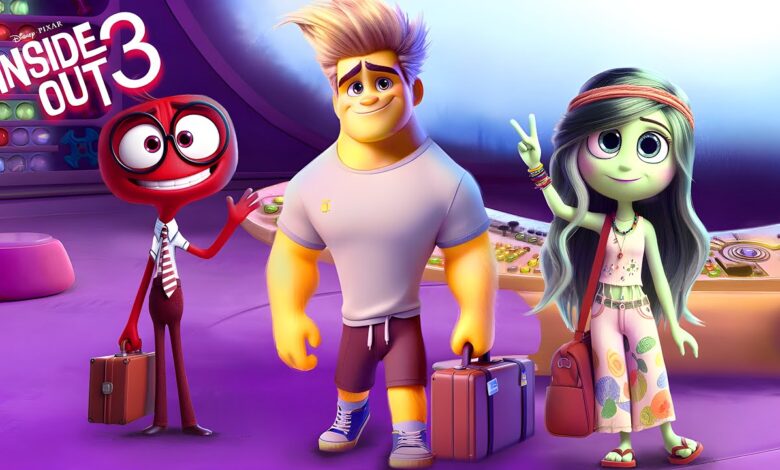Inside Out 3 New Emotions: Exploring the Latest Addition to the Emotion Family

The beloved Pixar movie Inside Out has already captured hearts worldwide by giving us a colourful, imaginative look at the inner workings of our emotions. The original film introduced us to five core emotions: Joy, Sadness, Fear, Anger, and Disgust. These emotions guided Riley, the young protagonist, through her tumultuous transition to a new city and a new life.
With the potential for a sequel or new developments in this fascinating universe, fans eagerly speculate about what new emotions might be added. This article explores the concept of Inside Out 3 new emotions, delving into the possibilities and implications of expanding the emotional spectrum.
The Original Emotions in Inside Out
Before diving into the Inside Out three new emotions, let’s revisit the emotions we already know from the first film. These five emotions were carefully chosen to represent the basic facets of human emotional experience.
Joy
- Role: Represents happiness and optimism.
- Characteristics: Bright, energetic, and always looking on the bright side.
Sadness
- Role: Represents feelings of sorrow and melancholy.
- Characteristics: Reflective, compassionate, and often underestimated.
Fear
- Role: Represents anxiety and apprehension.
- Characteristics: Cautious, nervous, and protective.
Anger
- Role: Represents frustration and irritation.
- Characteristics: Passionate, volatile, and straightforward.
Disgust
- Role: Represents revulsion and distaste.
- Characteristics: Skeptical, discerning, and often serves as a filter for avoiding unpleasant experiences.
The Concept of Adding New Emotions
Introducing new emotions in a potential sequel or additional content for Inside Out is exciting and complex. Emotions are fundamental to the human experience, and expanding this palette could offer deeper insights into our psychological makeup.
Why Add New Emotions?
- Complexity: Human emotions are complex and diverse. Adding new emotions can help explore different aspects of psychological experiences.
- Character Development: New emotions can provide new avenues for character growth and story development.
- Educational Value: It can offer viewers a more nuanced understanding of how emotions affect behaviour and decision-making.
Speculating on the Inside Out 3 New Emotions
Let’s explore some potential candidates for the Inside Out 3 new Emotions. These are speculative but grounded in psychological and emotional research.
1. Curiosity
- Role: Represents the desire to learn and explore.
- Characteristics: Inquisitive, imaginative, and adventurous.
- Potential Impact: This could drive exploration and learning, influencing how Riley approaches new experiences.
2. Embarrassment
- Role: Represents feelings of self-consciousness and awkwardness.
- Characteristics: Shy, awkward, and sensitive to social dynamics.
- Potential Impact: Could add depth to social interactions and personal growth, highlighting the complexities of social anxiety.
3. Pride
- Role: Represents self-esteem and accomplishment.
- Characteristics: Confident, motivated, and self-assured.
- Potential Impact: Could influence self-image and personal achievements, providing a new perspective on success and self-worth.
How New Emotions Could Enhance the Story
Introducing Inside Out, three new emotions could bring fresh dynamics to Riley’s inner world and the story’s narrative.
Emotional Growth
- Development: New emotions could reflect Riley’s growth and changing perspectives as she matures.
- Complexity: They could provide a more intricate portrayal of how different feelings interact and influence each other.
Storytelling
- New Challenges: Emotions like Curiosity and Embarrassment could introduce new storylines and challenges for Riley.
- Character Relationships: Pride and Embarrassment could alter how Riley interacts with her friends and family.
The Science Behind Emotions
Understanding the science behind emotions can contextualise the Inside Out three new emotions. Emotions are deeply rooted in both psychology and neuroscience.
Emotional Theories
- Basic Emotions Theory: Suggests that there are a limited number of basic emotions from which more complex emotions are derived.
- Dimensional Models: Propose that emotions can be measured on scales such as pleasure vs. displeasure and arousal vs. calm.
Brain and Emotions
- Limbic System: The brain region responsible for emotions, including the amygdala and hippocampus.
- Neurotransmitters: Chemicals like serotonin and dopamine play a role in regulating emotional states.
Table: Comparison of Existing and Potential New Emotions
Here’s a table comparing the existing emotions with the speculative new ones:
| Emotion | Role | Characteristics |
|---|---|---|
| Joy | Happiness and optimism | Bright, energetic |
| Sadness | Sorrow and melancholy | Reflective, compassionate |
| Fear | Anxiety and apprehension | Cautious, nervous |
| Anger | Frustration and irritation | Passionate, volatile |
| Disgust | Revulsion and distaste | Skeptical, discerning |
| Curiosity | Desire to learn and explore | Inquisitive, adventurous |
| Embarrassment | Self-consciousness and awkwardness | Shy, sensitive |
| Pride | Self-esteem and accomplishment | Confident, motivated |
The Future of Inside Out
As the Inside Out franchise continues to grow, the possibility of introducing new emotions opens exciting opportunities.
Potential Developments
- Sequels: Future films or series could explore new emotional landscapes further.
- Merchandise and Media: New emotions could be featured in books, games, and other media.
Fan Expectations
- Engagement: Fans are eager to see how new emotions will be integrated and how they will affect Riley’s journey.
- Innovation: Continued innovation in storytelling and character development is anticipated.
Conclusion
The concept of Inside Out 3 New Emotions offers a thrilling prospect for expanding our understanding of emotional complexity. Whether it’s Curiosity, Embarrassment, Pride, or another new emotion, these additions could enrich the Inside Out universe and provide deeper insights into the human experience.
As we await potential developments in this beloved franchise, one thing is certain: exploring new emotions will continue to captivate and inspire audiences, offering new ways to understand ourselves and each other.





